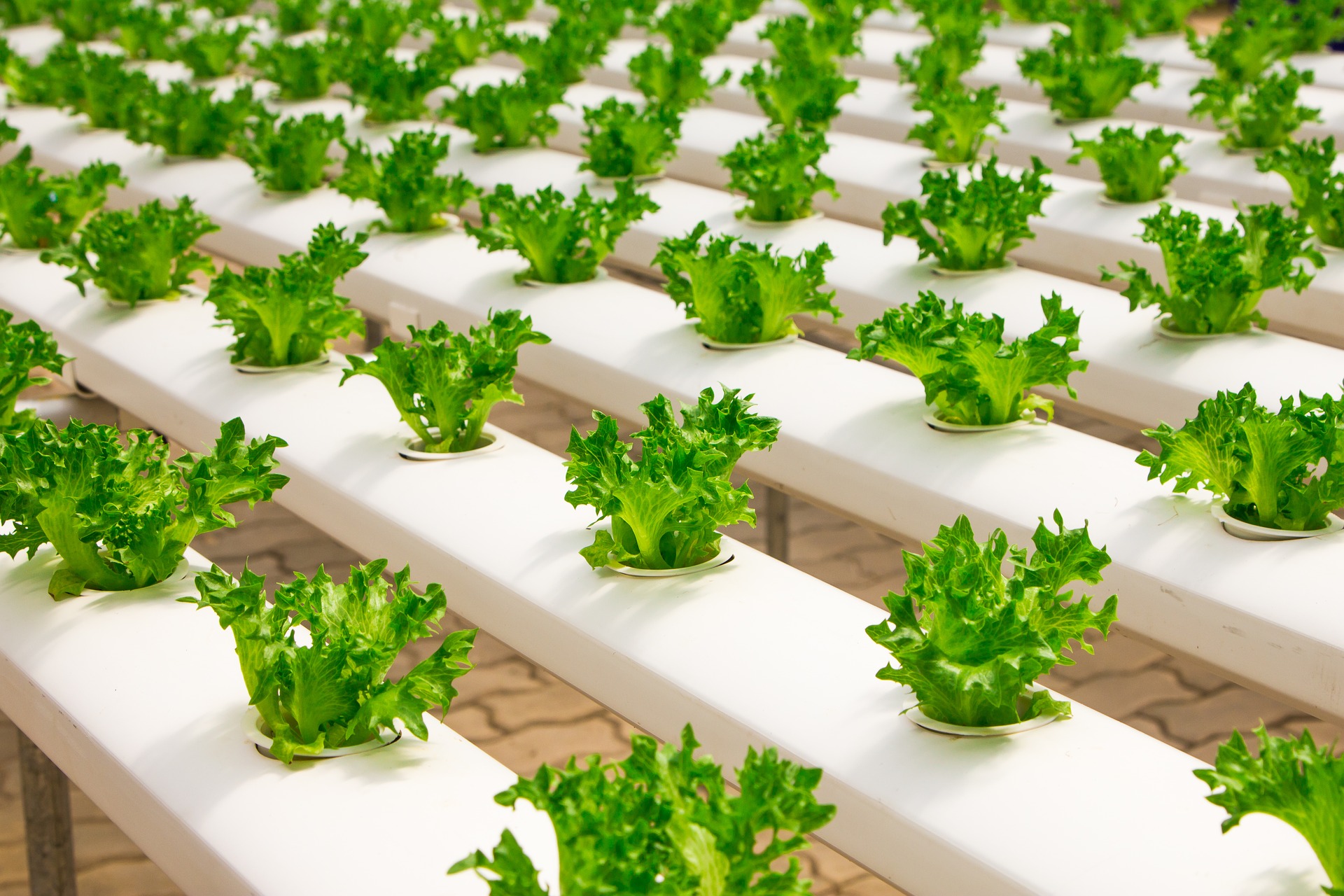Plants without soil

Plants without soil
Exploit benefits of the controlled ecosphere in hydroponics, minimize risks
Create a protective microbiome with humic acids
Hydroponics is a method of plant production in which the culture is not supplied through the soil, but through an aqueous nutrient solution. This saves space, money and water. However, what initially sounds promising also harbors serious risks in addition to great opportunities.
The advantages of hydroponics speak for themselves
Crops from hydroponic systems produce more yield in a shorter time, because they are permanently optimally supplied. Firstly, crops can be harvested all year round, regardless of climatic conditions and weather. Secondly, there is a huge reduction in water requirements (around 90 percent less) compared to conventional agriculture. Water is used selectively, circulated and often even recycled. Plants in hydroponics also require little space because they can be grown vertically. Thirdly, the roots do not have to spread out to supply nutrients as they do in soil and therefore only require 1/5 of the space.
Hydroponics as part of the solution for global food security
Perhaps the greatest advantage is regional cultivation. With hydroponics, it is possible to cultivate sites that would otherwise not be suitable for this purpose, thereby scoring points with greatly reduced transportation. The closed system means that pesticides and fertilizers are not leached into the groundwater, and herbicides do not have to be used at all due to the lack of invasive weed.
In a model calculation for the desert region of southern Arizona, USA, the following comparison of hydroponics and conventional cultivation for lettuce was obtained:
| Yield | Required amount of water | Amount of energy needed | |
|---|---|---|---|
Hydroponics | approx. 41 kg/m²/year | approx. 20 l/kg/year | approx. 90,000 KJ/kg/year |
Conventional cultivation | approx. 3.9 kg/m²/year | approx. 250 l/kg/year | approx. 1,100 KJ/kg/year |
This shows that hydroponics can be a sustainable solution for regional food production, especially in water-scarce regions with little fertile soil and an abundance of renewable energy (from wind and sun). These include desert regions and also cities where vacant infrastructure such as office buildings and rooftops lend themselves to cultivation and energy supply. However, especially in locations where soils have not yet been lost and areas are not yet sealed, hydroponics should not be the method of choice.
Where there is light, there is also shadow - disadvantages of hydroponic systems
Of course, there are downsides and full-blown risks to growing food under such controlled conditions.
The artificial fertilizer required for nutrient supply must be produced and transported in an energy-intensive manner. Even when biogenic fertilizers are used, hydroponics is not approved for the production of organic food. This is also due to the fact that special fungicides and insecticides are always necessary to protect the sensitive plants.
The technical requirements for cultivation as well as the energy demand for cooling the irrigation water are high. In order not to relativize the positive effects of hydroponics too much, the supply should definitely be provided by renewable energies.
Hydroponic systems are also very susceptible to chronic disease infestation and are highly sensitive to the smallest changes. The application of strict safety and hygiene concepts as well as constant external control consume many resources, especially expensive know-how. Once a pathogen or an unwanted guest settles in a closed hydroponic system, drastic measures are required to restore the original balance. Since the plants hardly know any stress and therefore have little resistance, this often means the total loss of an entire crop cycle as well as the need for a costly and time-consuming full sterilization.
Cultivation also has an influence on the taste and composition of the vegetables. To protect themselves from pests and predators, plants form aromatic compounds under natural conditions that they do not produce in closed systems. Uniform fertilizer solutions and the absence of different soil conditions also reduce aroma diversity. The one-sided use of certain fertilizers alters the composition of the plants' proteins and secondary ingredients, from which the quality of the nutrition can suffer.
Compensating for disadvantages - humic acids give plants back a piece of the earth
In hydroponic systems, plants are reduced entirely to their material being. In soil, countless interactions normally take place that do not function in the nutrient solution, for example via mycorrhiza. Nevertheless, a microbiome also forms in hydroponics, into which biostimulants can be specifically introduced to enable certain modes of soil functioning. For example, BioHealth TH BS contains Trichoderma and Bacillus Subtilis and can help prevent the development of harmful fungi or unfavorable bacteria. As the nutrient solution gains complexity towards the soil, the entire system becomes more stable. The plants themselves also become more resilient to biotic and abiotic stressors.
Humic acids also have an auxin effect, which means they have a phytohormonal influence on cell division, which in hydroponics, for example, leads to more fine roots and faster nutrient uptake. Humic acids have a chelating effect on nutrients so that plants can absorb them more easily. The result is more efficient nutrient supply and optimal metabolic performance and yield. Under the influence of humic substances, plants grow faster, reach their full yield potential earlier and are generally more resistant to stress factors. Humic substances in combination with other biostimulants such as beneficial microorganisms thus raise hydroponic systems to a higher level of resilience and efficiency.
Overall, the production of food by means of hydroponics can serve as a partial solution in food security and produce food of healthy quality per cultivation practice. The addition of humic substances and other biostimulants here represents an opportunity to give a piece of "soil" back to the system. Have you also had experience with hydroponics? What do you think about vertical cultivation without soil and do you think that high-quality food can be produced in this way?

